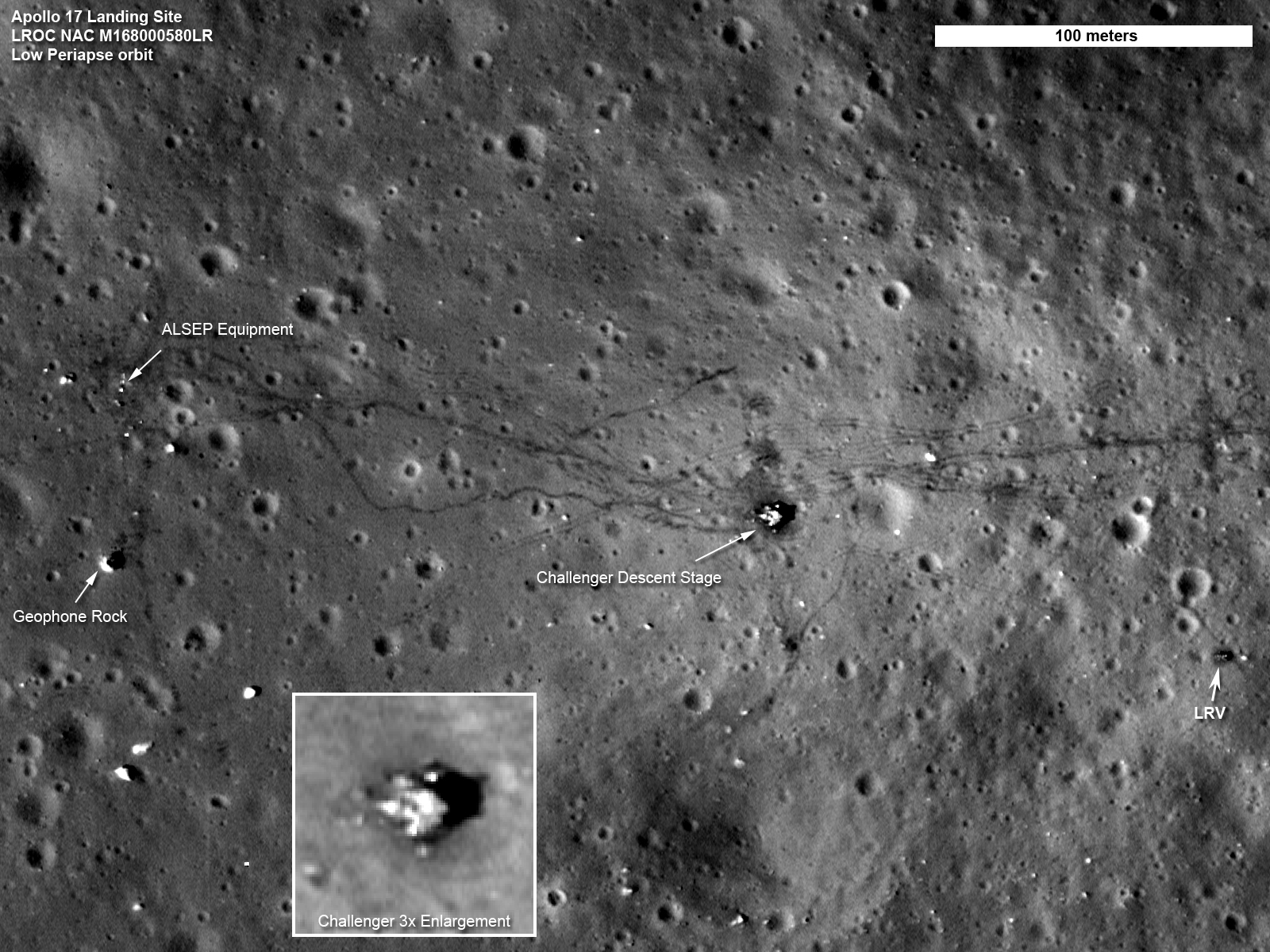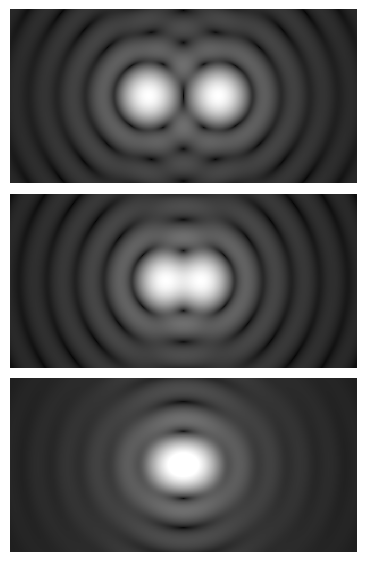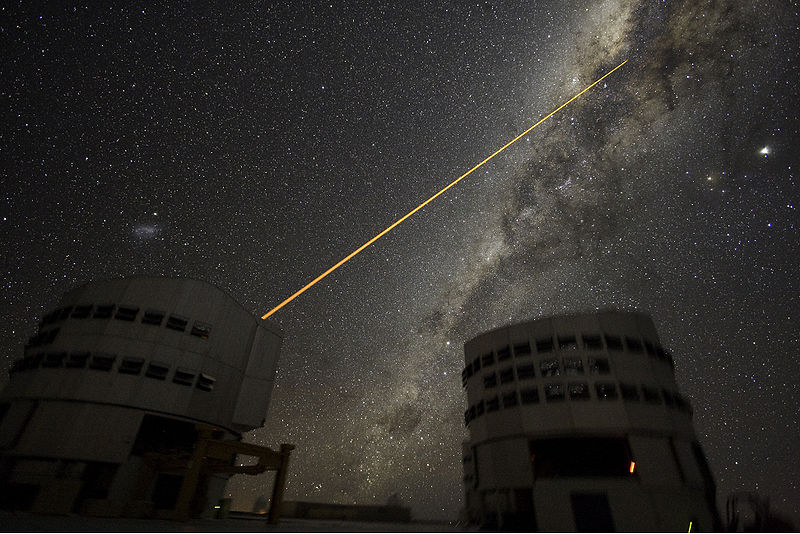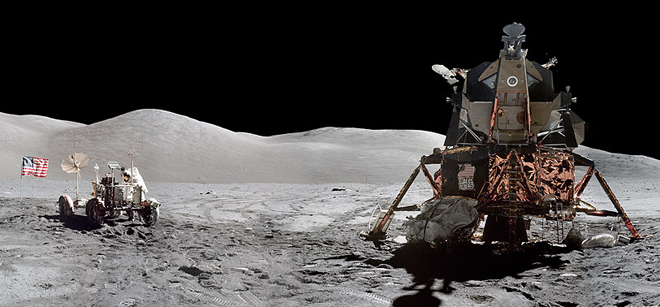Physicist: About why you’d expect: they’re just too damn small and too damn far away. Nothing fancy. That’s not to say that we can never get images, just that you need to be a lot closer. The lunar landers are each about 4 meters across and about 384,400,000 meters away, which makes them about as hard to see as a single coin from a thousand miles away. You gotta squint.

A picture of the Apollo 17 landing site taken by the Lunar Reconnaissance Orbiter which, as the name implies, was in orbit around the Moon when it took this presumably reconnaissance-related picture. Those meandering lines are tracks left by a lunar rover. Click to enlarge.
In fact, a big part of why we (humans) bother to go to the Moon, other planets, and space in general is that photographs from Earth leave a lot to be desired. In addition to being far from everything else, here on the surface of Earth we’re stuck at the bottom of an ever-moving sea of air. In exactly the same way that the surface of water scatters light, air makes it difficult for astronomers to practice their dread craft.
Also, not for nothing, telescopes are terrible at retrieving material samples.
You and every telescope on Earth (and the Hubble Telescope in low Earth orbit) are all about a quarter million miles from the Moon and the landing sites thereon. If we ever get around to building something bigger on the Moon, like mines or cities or president’s heads, then we shouldn’t have nearly as much trouble seeing it from Earth.
Answer Gravy: It turns out that the best/biggest telescopes we use today on Earth can’t detect things the size and distance of the lunar landers using visible light. This isn’t due to poor design; the devices we’re using now are, in a word, perfect. They literally cannot be made appreciably better (at detecting visible light). The roadblock is more fundamental.
The “resolving power” of a telescope, is described in terms of whether or not you can tell the difference between a pair of adjacent points. If the two points are too close together, then you’ll see them blurred together as one point and they are “not resolved”. If they’re far enough apart, then you see both points independently.
Whether it uses mirrors or lenses, the resolving power of every telescope is limited by some fundamental constraints determined by the wavelength of the light that’s being observed and by the size of the aperture.

Every point in every image is surrounded by a rapidly diminishing “Airy disk” which are a symptom of light being wave-like. This is only a problem really close to the diffraction limit. You don’t see these when you take a picture on a regular camera because these rings are smaller than the individual pixels in the camera’s CCD (by design).
Because light is a wave it experiences “diffraction” which makes it “ooze around corners” and generally end up going in the wrong directions. But the larger a telescope’s opening, the more the light waves have a chance to interfere in such a way that they propagate in straight lines, which makes for cleaner images where the light ends up more-or-less where it’s supposed to be when it gets to the film or CCD or your retina or whatever.
It turns out that the relationship between the smallest resolvable angle, θ, the wavelength, λ, and the diameter, D, of the aperture is remarkably simple:
Visible light has a wavelength of around 0.5 micrometers (about 2,000,000 per meter) and the largest visible-spectrum telescopes on Earth are about 10 meters across (Hubble is a more humble 2.4m across). That means that the absolute best resolution that any of our telescopes can hope to achieve, under absolutely ideal circumstances, is about . Or, for the angle buffs out there, about 0.01 arcseconds. This doesn’t take into account the scattering due to the atmosphere; we can do a little to combat that from the ground, but our techniques aren’t perfect.

By carefully looking at how the atmosphere distorts a laser beam shot upwards from a telescope on the ground, we can take into account how the atmosphere affects light coming into the telescope from space.
The lunar landers are a little over 4 meters across (seen from above) and are about 384,403,000 meters away. That means that the landers subtend an angle of about 0.002 arcseconds. In order to see this from Earth, we’d need a telescope that is, at absolute minimum, about 200 meters across. If we wanted the image to be a more than a single pixel, then we’d need a mirror that’s a few miles across.
So, don’t expect that anytime soon.








21 Responses to Q: Why can’t we see the lunar landers from the Apollo missions with the Hubble (or any other) telescope?